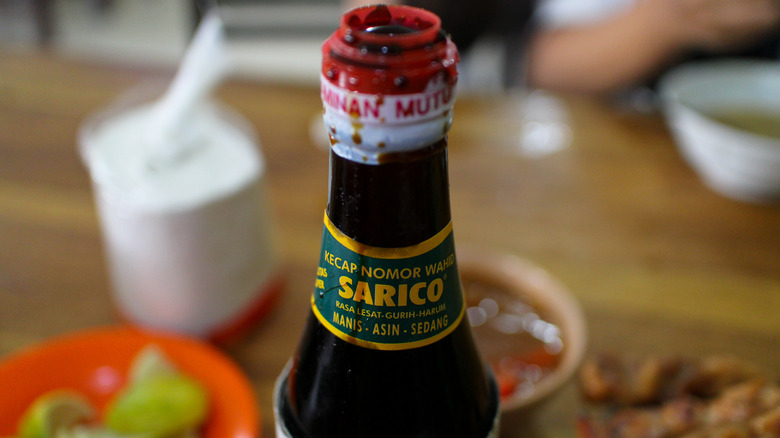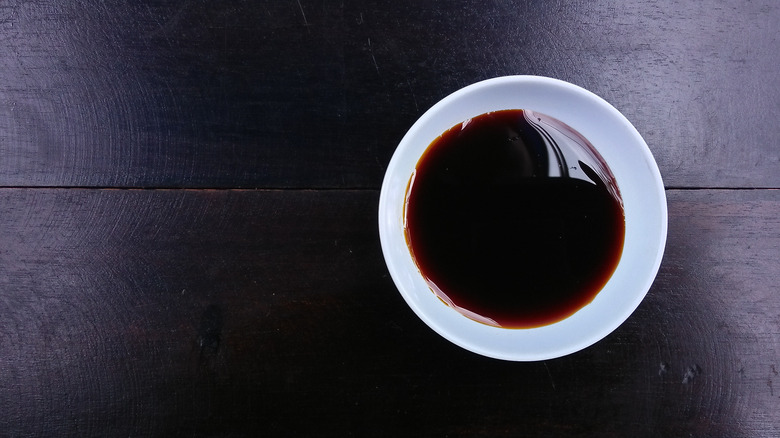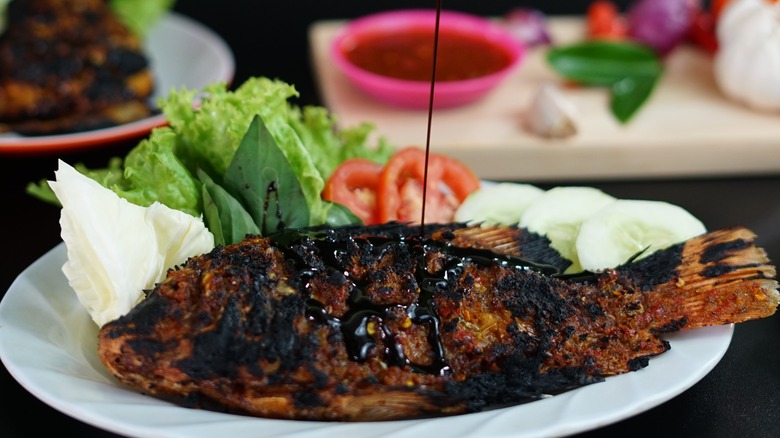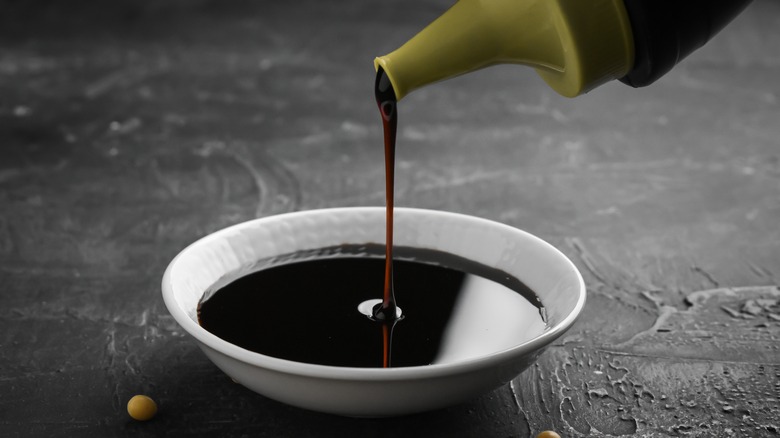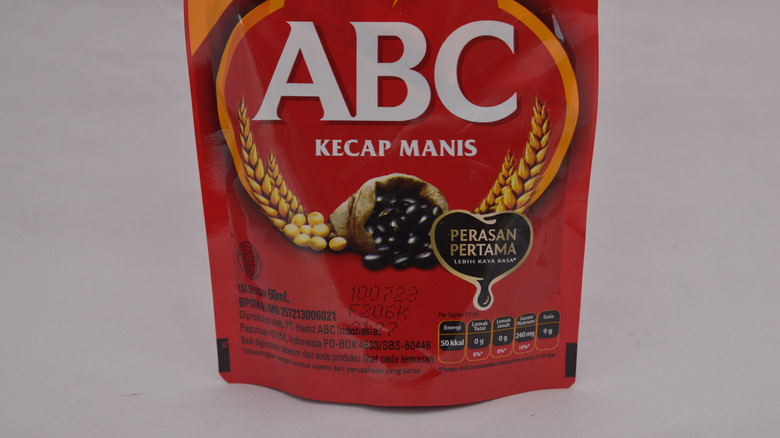The Indonesian Soy Sauce You Should Always Keep On Hand
Not sure how to add that extra something to dinner? Reach for a sauce. From a spicy peanut dip and easily assembled stir-fry dressing to a sour-spicy Laotian bang bang sauce, Asian cuisine is an especially delicious launching-off point. After all, the continent is the birthplace of a globally beloved condiment– Sriracha chili sauce. Originating in the coastal city of Si Racha, Thailand, this spicy but balanced chili paste goes well with a wide range of dishes.
Yet adding a dash of heat isn't the only way to spritz up the flavor. In Indonesia, varieties of chili sambal are ubiquitous, as is kecap manis — a type of sweet soy sauce. In fact, the thick and syrupy liquid accounts for 90% of the soy sauce consumed in the nation, notes Asian Recipe. With such popularity, clearly, there must be something special to this pantry staple. Let's dive into what it's all about.
What is kecap manis?
Kecap manis, also referred to as ketjap manis, is a thicker, sweeter cousin of soy sauce. Produced with palm sugar and spices, it's a delectable flavor fit for incorporating into various dishes — from rice and steaks to curry. Interlinked to Indonesia, the condiment is so heavily utilized across the archipelago nation, it's even referred to as Indonesian ketchup, per BBC Good Food.
Most kecap manis sold worldwide are about 10 to 15% soy sauce by volume, with water and sugar comprising the rest. Such a molasses-like combination creates an ultra-thick, gooey texture — first-time cooks will be surprised how different it is from normal soy sauce. Yet palm sugar's inclusion is also what makes the sauce stand apart from others. The flavor is smokey, with toffee-like sweetness and a satisfying savouriness. Rather than replacing the saltiness of regular soy sauce, kecap manis is typically used as a sweetener alongside it, reports Serious Eats. With an approachable flavor, it's no surprise the sauce is an everyday condiment. Let's dive into how to use it.
How is it used?
Used as both a tableside condiment and an ingredient, kecap manis exhibits an extensive array of culinary uses. Its most quintessential use is in nasi goreng — Indonesian-style fried rice. The dish is made by sauteeing aromatics like garlic, shallots, and chilies in a wok, then adding stale rice tossed with kecap manis, per Rasa Malaysia. It's also a core component of the sauce for ketoprak — a vegetarian salad made with bean sprouts, rice noodles, tofu, and a garlic peanut dressing, via So Yummy Recipes.
The recipes don't need to be complex — kecap manis can be one of the sole flavors in a dish, including soba, tofu, or mushroom stir fry. In addition to making a great dip for skewers, it also functions brilliantly in marinades, especially when combined with chilies, notes AllRecipes. And as Food52 explains, kecap manis doesn't need to be limited to Indonesian-style dishes. The sauce makes for a great addition to scrambled eggs, can deliver a sweet hit to avocado toast, or provide that extra note in tomato soup. Once attuned to its delicious sweet taste, the sky's the limit for applications.
How to make kecap manis
Like turning balsamic vinegar into a reduction, the sauce can be concocted at home. While reducing it takes some time, it also allows for experimentation with various spice additions — integrating a personalized spin. Opt for a preferred soy sauce brand, and combine it with palm sugar in a saucepan. A brown sugar substitution also works in a pinch, but keep in mind it yields a sweeter, less complex result. Creating kecap manis' desired texture takes quite a bit of the sweet stuff– one and a quarter cups of sugar per cup of soy sauce. Don't forget to throw in desired flavorings, too; molasses, ginger, cinnamon, cloves, and garlic are common starting points.
Reduce for around 15 minutes, and cool before use, explains The Daring Gourmet. For easier culinary applications, strain the spices from the mixture. Just make sure to take the kecap manis off of the heat when it's still liquidy — otherwise, it'll be too thick once cooled, according to What to Cook Today.
Where to buy and alternate substitutions
Store-procured kecap manis is also delicious — and not too difficult to find. In addition to being sold online, it's easily found at a local Asian grocery, per Food52. Kecap manis stores for up to three months in the fridge. Just double-check to verify that your container is airtight; otherwise, it may spoil. Consider adding more spices during the storage process, whether using a store-bought or homespun version. Flavors will continue to coalesce, yielding an aromatic result, notes Chili Pepper Madness.
If unable to find or make your own kecap manis, reach for a bottle of oyster sauce and combine it with sugar. Alternatively, hoisin sauce also provides a similarly sweet palate — just remember to adjust for the texture (via Non-Guilty Pleasures). Or, best of all, stock up on several bottles of kecap manis at once. With its ease of integration and delicious flavor, this Indonesian sauce will surely become a pantry staple.
